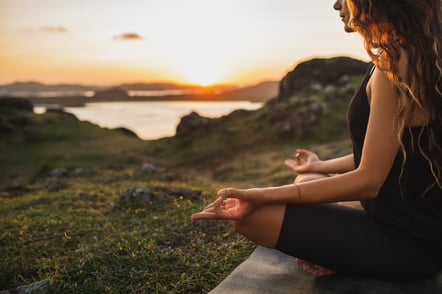The Mental Health Perks of Cutting Back
Reducing screen time comes with big mental health benefits, especially in today’s world of constant connectivity and digital stimulation. Spending too much time in front of screens can lead to burnout, anxiety, and disrupted sleep. Our brains are often stuck processing an endless stream of information, which can leave us overstimulated and stressed.
 By cutting back on screen time, we give our minds space to rest, process more effectively, and focus on the present moment. A digital detox can ease anxiety, boost your mood, and improve emotional well-being by allowing your brain to reset and reconnect with more meaningful activities. Less screen exposure can also lead to better sleep, reduced symptoms of depression, and sharper cognitive function—giving your mind the break it deserves.
By cutting back on screen time, we give our minds space to rest, process more effectively, and focus on the present moment. A digital detox can ease anxiety, boost your mood, and improve emotional well-being by allowing your brain to reset and reconnect with more meaningful activities. Less screen exposure can also lead to better sleep, reduced symptoms of depression, and sharper cognitive function—giving your mind the break it deserves.
How to Start Your Digital Detox
Starting a digital detox doesn’t have to be overwhelming. Simple steps can go a long way in cutting back on screen time and reducing its stress. Begin by setting aside screen-free hours each day—like during meals or before bed—to help your brain unwind. Over time, you can gradually increase these breaks as it becomes part of your routine.
Mindfulness or meditation is another great tool to help reduce the mental noise caused by digital distractions. Just 10-15 minutes a day of deep breathing, guided meditation, or even a walk outside without your phone can help you reconnect with the moment and feel more grounded. These intentional pauses can help bring a sense of calm and improve overall well-being.
Move Your Body, Not Your Scrolling Thumb
Physical activity is a great way to unplug and refresh. Yoga or group workouts, for example, not only improve physical health but also provide a mental reset by reducing anxiety and lifting your mood. Yoga fosters a mind-body connection, promoting relaxation and mindfulness through movement. Group workouts offer the added benefit of community and accountability, which can help combat feelings of isolation that sometimes come with too much screen time.
Whether it’s a yoga session, a nature walk, or a group fitness class with friends, these activities give you a chance to step away from the screen, clear your mind, and boost your physical and mental health.
Ready to give it a try? Your mind—and your well-being—will thank you.
Ready to put down the phone?
Try our new FREE program: PowerLifting with Shelby! Whether you're new to powerlifting or an experienced pro, you’ll have the chance to set new goals for the new year. Join us for the NIFS PowerLifting program starting January 20th. Click the link to register now!


 Seriously. Stop and take a breath. Don’t judge your technique, just breathe in and out. Failure to do both in and out will likely result in you fainting, and the ERs and urgent care centers have enough to do without you coming in with a cut forehead requiring stitches.
Seriously. Stop and take a breath. Don’t judge your technique, just breathe in and out. Failure to do both in and out will likely result in you fainting, and the ERs and urgent care centers have enough to do without you coming in with a cut forehead requiring stitches.
 There seems to be an expectation that women are supposed to do it all and not complain. That women are supposed to be wives and mothers, work full time, juggle friendships, have a social life, have time for themselves, so on. Society is ever changing, and we are supposed to keep up with it. Let’s rewind some years ago where most women stayed at home with their children, and taking care of their household was their only responsibility.
There seems to be an expectation that women are supposed to do it all and not complain. That women are supposed to be wives and mothers, work full time, juggle friendships, have a social life, have time for themselves, so on. Society is ever changing, and we are supposed to keep up with it. Let’s rewind some years ago where most women stayed at home with their children, and taking care of their household was their only responsibility.  Growing up and continuing to live in the Midwest, I’ve grown to appreciate the summer months more and more. In fact, in Michigan we joke that there are really only two seasons:
Growing up and continuing to live in the Midwest, I’ve grown to appreciate the summer months more and more. In fact, in Michigan we joke that there are really only two seasons: